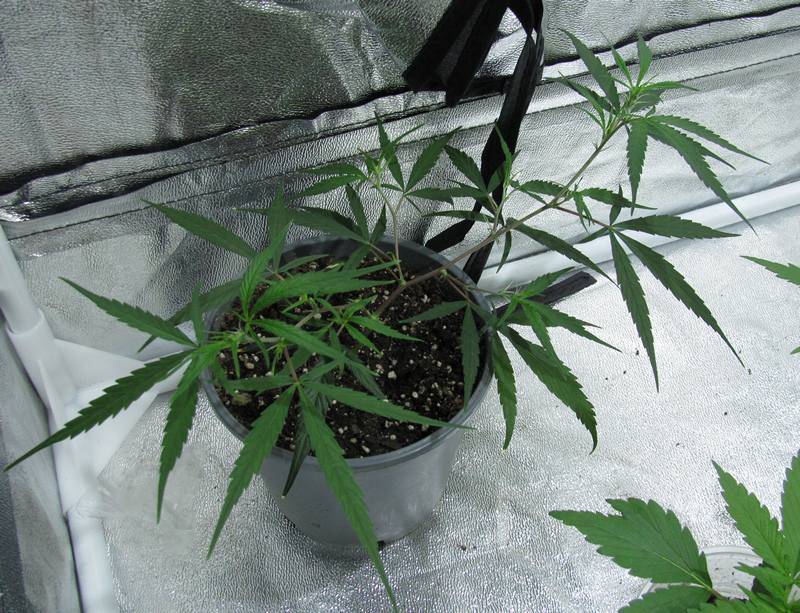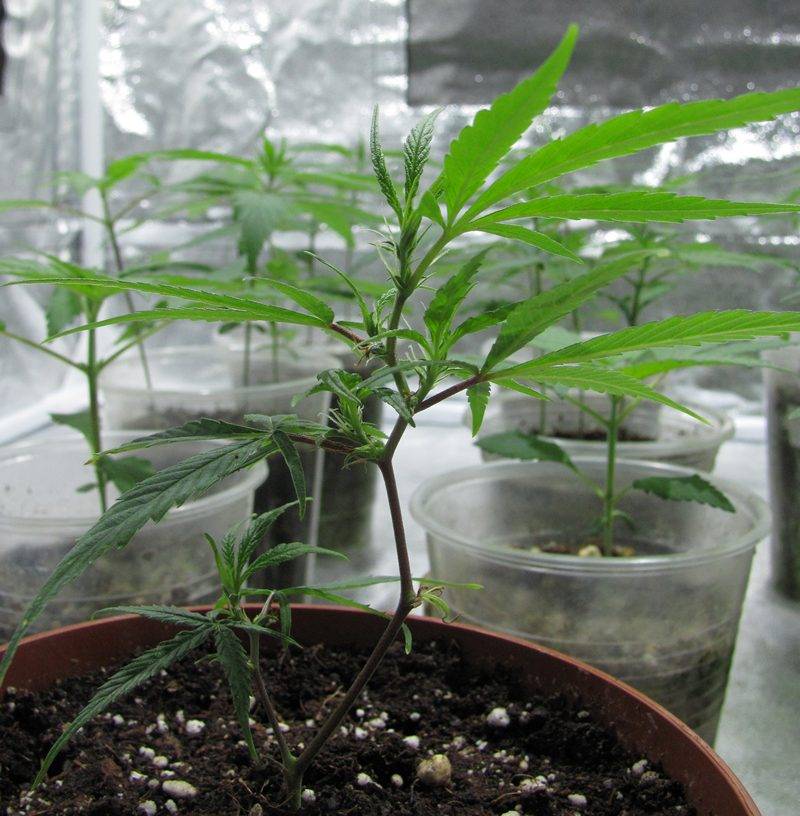Hello people 
It's 2020 and the season has started! I'll continue this thread with this year's attempts at breeding the great Zamaldelica plant that I keep clones of. Here are the 2 clones that will be used for producing seeds.

This one almost died from a russet mites attack, but bounced back:

What's the plan:
28 ZamJarilla seeds were started (26 sprouted) with the intent to find a nice male to back-cross to the Zamaldelica mom. Another female will be grown outdoors. Another 2 females will be gifted to 2 friends to grow outdoors guerrilla style and on a balcony.
2 Purple Mexicans started, one will be selected to be pollinated by the selected ZamJarilla male, for a 50% Mexican multi-hybrid. I found Purple Mexican nice as medical weed, so I want to check if the multi-hybrid will make for a good relaxed calm medical sativa. The flowered mother will be re-revegged after harvesting the seeds and will be grown outdoors for a harvest of buds.
6 Kullu Valley seeds started (5 sprouted), all will be flowered and open pollinated to produce more Kullu seeds. A male will be also used to pollinate the Zamaldelica mother. Kullu is described as trippy and energetic, sounds like a perfect match for the Zamaldelica. One of the flowered females will be re-vegged after harvesting its seeds and will be grown outdoors to check if pure Kullu can successully be harvested here, with its listed November-December harvest.
Once I harvest the first Zam x ZamJarilla, Zam x Kullu and Purple Mexican x ZamJarilla seeds, some will be sown outdoors for testing the crosses (I expect very small plants due to lack of time).
So, this year's outdoor season will be with 3 big plants (ZamJarilla, re-vegged Kullu and re-vegged Purple Mexican) and many small ones of the crosses planted later in the season.

It's 2020 and the season has started! I'll continue this thread with this year's attempts at breeding the great Zamaldelica plant that I keep clones of. Here are the 2 clones that will be used for producing seeds.
This one almost died from a russet mites attack, but bounced back:
What's the plan:
28 ZamJarilla seeds were started (26 sprouted) with the intent to find a nice male to back-cross to the Zamaldelica mom. Another female will be grown outdoors. Another 2 females will be gifted to 2 friends to grow outdoors guerrilla style and on a balcony.
2 Purple Mexicans started, one will be selected to be pollinated by the selected ZamJarilla male, for a 50% Mexican multi-hybrid. I found Purple Mexican nice as medical weed, so I want to check if the multi-hybrid will make for a good relaxed calm medical sativa. The flowered mother will be re-revegged after harvesting the seeds and will be grown outdoors for a harvest of buds.
6 Kullu Valley seeds started (5 sprouted), all will be flowered and open pollinated to produce more Kullu seeds. A male will be also used to pollinate the Zamaldelica mother. Kullu is described as trippy and energetic, sounds like a perfect match for the Zamaldelica. One of the flowered females will be re-vegged after harvesting its seeds and will be grown outdoors to check if pure Kullu can successully be harvested here, with its listed November-December harvest.
Once I harvest the first Zam x ZamJarilla, Zam x Kullu and Purple Mexican x ZamJarilla seeds, some will be sown outdoors for testing the crosses (I expect very small plants due to lack of time).
So, this year's outdoor season will be with 3 big plants (ZamJarilla, re-vegged Kullu and re-vegged Purple Mexican) and many small ones of the crosses planted later in the season.


